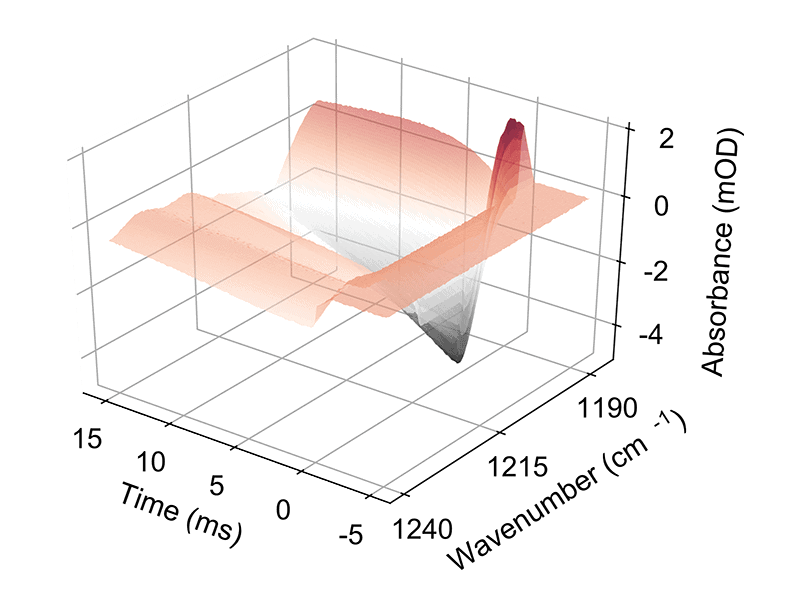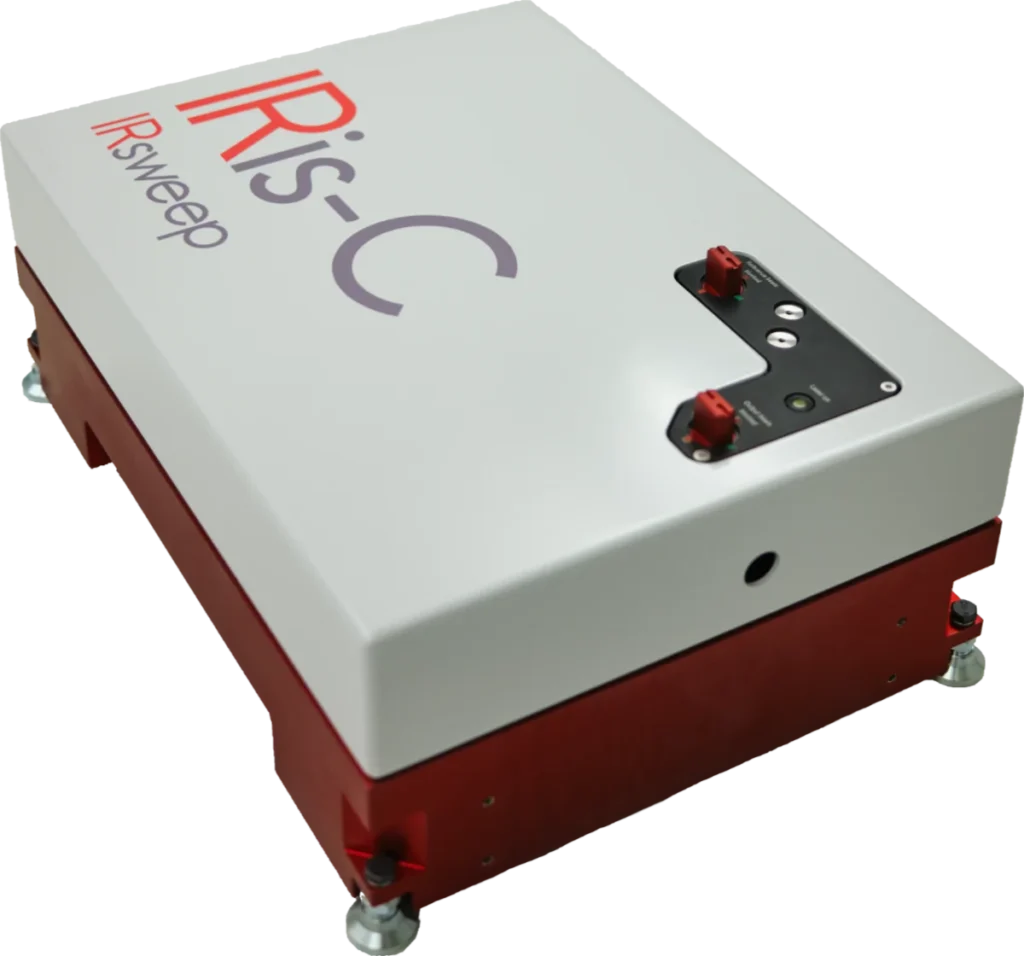
Time-resolved spectroscopy in the infrared is often desirable, but can be challenging for existing FTIR-based equipment, due to the limited time resolution (bound by the mechanical movement of the interferometer mirror) and the brightness of the thermal light source.
The IRis-F1 dual-comb spectrometer overcomes these limitations by employing a broadband laser source and using so-called multi-heterodyne detection, which resolves all colors of the laser simultaneously on the detector. As a result, the whole spectrum can be recovered in less than one microsecond. Signal-to-noise ratios >1000 can be achieved within 100 µs integration time.
Since spectral and temporal resolution can be achieved in a single shot, the massive experiment repetition required for step-scan techniques is not necessary, enabling the study of irreversible reactions that have not been accessible to IR spectroscopy before.
Typical application fields are combustion diagnostics, protein dynamics or other reaction kinetics. Reactions on the second scale, such as curing reactions or stopped flow experiments, also benefit from the increased signal-to-noise ratio per time compared to FTIRs
Center wavelengths in the range of 2200 cm-1 to 1000 cm-1 are available in dual-comb modules covering more than 60 cm-1. These modules are also user-exchangeable later on, to switch from one spectral band to another.
The sample can be studied with a wide range of accessories, ranging from ATRs, via transmission cells to reflection configurations.
Related application notes
- Infrared stopped-flow at 220 spectra per second: a new addition to the toolbox
- Dental curing
- Stopped flow as a way to study chemical reactions
- Rapid reaction monitoring of curing processes with the IRis-F1
See more application notes here.



